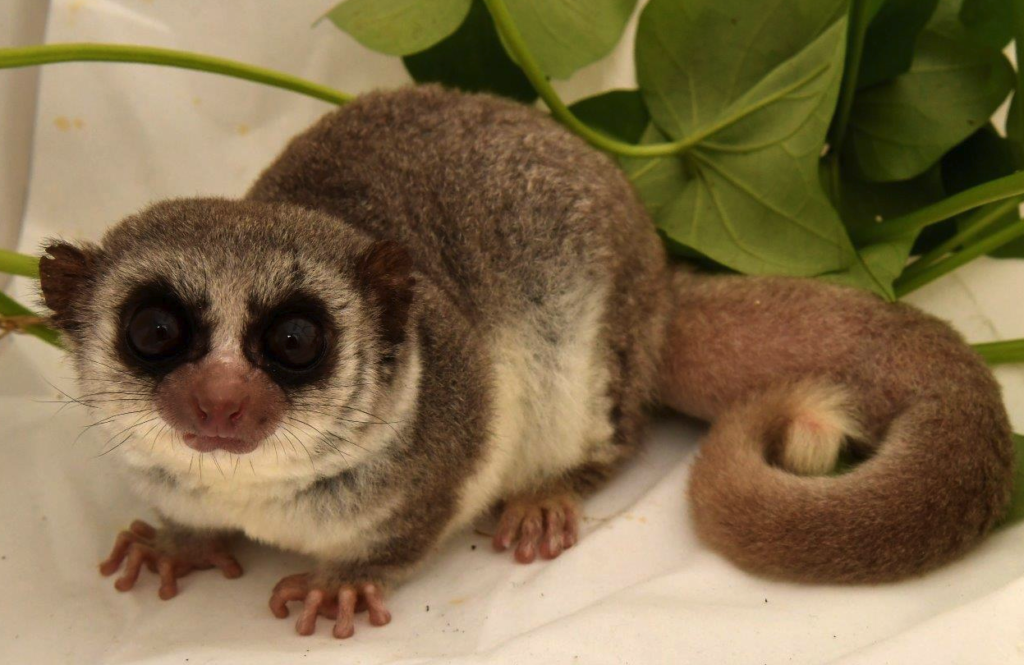
Thrasher, a 12-year-old fat-tailed dwarf lemur, proudly displays his beautiful thick tail — evidence that the DLC’s mouse and dwarf lemurs have begun entering the initial phases of their yearly period of torpor!
If Thrasher were a wild lemur living in Madagascar, the fat stored in his tail would help him survive the cool dry winter during which time natural food becomes somewhat limited. Even in the controlled conditions of the DLC, in which plentiful food is delivered daily and temperatures are kept at a cozy level throughout the winter, Thrasher — along with his fellow dwarf and mouse lemurs — will soon become noticeably less active as his metabolism slows and his body temperature starts to fluctuate widely during the day. In the spring, after a winter of inactivity, the dwarf and mouse lemurs will become much more active, and any leftover fat will melt away as the small lemurs get ready for their spring breeding season. Big thanks to Primate Technician Danielle, who alerted the DLC photographer, David Haring, to Thrasher’s magnificent tail!
Learn more about hibernation and fat-tailed dwarf lemurs here: https://lemur.duke.edu/

